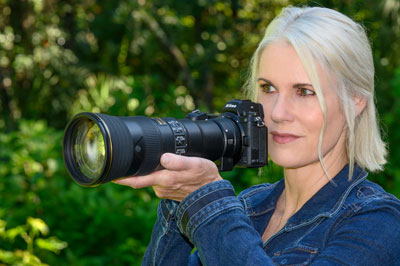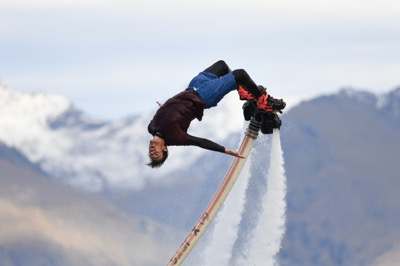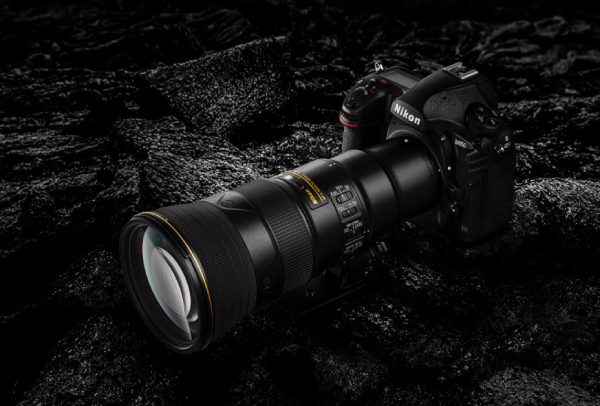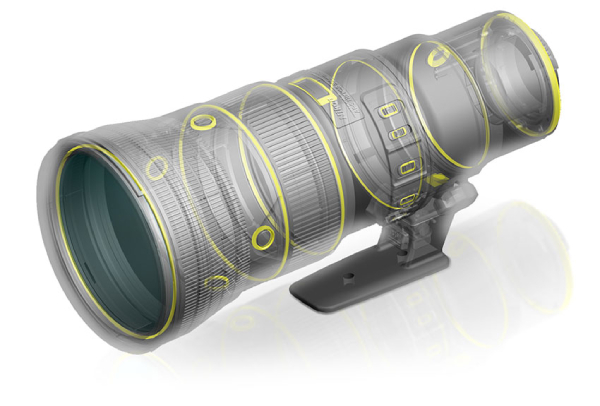
Pack light. Go big.
When photographing birds, wildlife, sports or action, mobility can make the difference between nailing the shot or missing it altogether. The AF-S NIKKOR 500mm f/5.6E PF ED VR is a fraction of the size of most full-frame 500mm lenses, freeing you to be as nimble as your subjects.

Travel light
Nikon’s smallest, lightest full-frame 500mm prime lens ever*—approx. 23.5 cm long and 1.5 kg.

Bring the world in reach
Powerful 500mm focal length (750mm equivalent on DX-format) brings the shots that matter in reach.

Shoot in the moment
Handheld vibrations are tamed by VR image stabilization equivalent to a shutter speed 4.0 stops* faster.
Super-telephoto reimagined

Proprietary Phase Fresnel technology
For nearly two centuries, Fresnel lenses were used in lighthouses to project a strong beam of light. By harnessing the idea in reverse—for gathering light instead of projecting it—Nikon engineers can create lenses that are shorter and lighter, with the same image quality and zoom power of much larger lenses.

Outstanding image quality
When combined with Nikon’s Extra-low Dispersion (ED) glass and other NIKKOR glass elements, the Phase Fresnel element produces high resolution, high contrast images with beautiful background blur.

Fast autofocus
Lighter, more compact optics don’t just benefit your mobility—a lighter focus lens group allows the autofocus system to focus faster, too. With the AF-S NIKKOR 500mm f/5.6E PF ED VR, Nikon’s Silent Wave Motor (SWM) is able to operate at peak performance for fast, quiet autofocus.
Versatile and durable

Technology
Phase Fresnel
Phase Fresnel (PF) lens elements effectively compensate for chromatic aberration and ghosting when combined with ordinary glass lens elements. The PF lens element is based upon the Phase Fresnel lens, which appears to have a series of concentric circles engraved onto it. Utilizing a Phase Fresnel lens element allows Nikon engineers to use fewer lens elements, resulting in a more compact and lightweight lens. Due to the characteristics of a PF (Phase Fresnel) lens that utilizes the photo diffraction phenomenon, when there is a strong light source within the frame or when light enters the lens from outside of the frame, ring-shaped coloured flare may occur according to shooting conditions. This phenomenon can be minimized with “PF Flare Control” to be included in Capture NX-D (ver.1.1.0 or later). For more information, see software Help/manual. Capture NX-D is available from the Nikon website. Be sure to keep your software up to date.
ED (Extra-Low Dispersion) Glass
An optical glass developed by Nikon that is used with normal optical glass in telephoto lenses to obtain optimum correction of chromatic aberrations.
Nano Crystal Coat
An anti-reflective coating developed by Nikon that virtually eliminates internal lens element reflections across a wide range of wavelengths. Nano Crystal Coat solves ghost effects caused by red light and effectively reduces ghost and flare caused by light entering the lens diagonally.
Electromagnetic Diaphragm Mechanism
An electromagnetic diaphragm mechanism in the lens barrel provides highly accurate electronic diaphragm or aperture blade control when using auto exposure during continuous shooting. With conventional D/G type lenses, the diaphragm blades are operated by mechanical linkage levers.
Vibration Reduction
A Nikon in-lens technology that improves image stability by automatically compensating for camera shake. Lenses that offer VR will feature the abbreviation VR on the lens barrel.
Fluorine Coat
Photographers need gear that can withstand the elements. Nikon’s fluorine coat effectively repels dust, water droplets, grease or dirt, ensuring easy removal even when they adhere to the lens surface. Nikon’s fluorine coat endures a high frequency of lens surface wiping and its anti-reflective effect also contributes to the capture of clear images.
IF Lens
A NIKKOR lens in which only the internal lens group shifts during focusing. Thus, IF NIKKORS do not change in size during AF operation, allowing for compact, lightweight lenses capable of closer focusing distances. These lenses will be designated with the abbreviation IF on the lens barrel.
Silent Wave Motor
AF-S NIKKOR lenses feature Nikon’s Silent Wave Motor (SWM). This technology converts “traveling waves” into rotational energy to focus the optics. This enables high-speed autofocusing that's extremely accurate and super quiet.
M/A
Select NIKKOR lenses have a focusing mode which allows switching from automatic to manual focusing with virtually no lag time by simply turning the focusing ring on the lens. This makes it possible to seamlessly switch to fine manual focusing while looking through the viewfinder.
A/M
A/M stands for Auto-Priority Manual Mode. This mode also enables an easy transition from autofocus to manual during AF operation. However, mode switch sensitivity has been altered to reduce the possibility of sudden unintentional switching to manual focus while shooting.
Super Integrated Coating
Nikon Super Integrated Coating is Nikon's term for its multilayer coating of the optical elements in NIKKOR lenses.
| Specifications | |
|---|---|
| Focal Length | 500mm |
| Maximum Aperture | f/ 5.6 |
| Format | FX/35mm |
| VR (Vibration Reduction) Image Stabilization | Yes |
| Nano Crystal Coat | Yes |
| AF-S (Silent Wave Motor) | Yes |
| Approx. Dimensions (Diameter x Length) | 106 x 237mm |
| Approx. Weight | 1460 g |